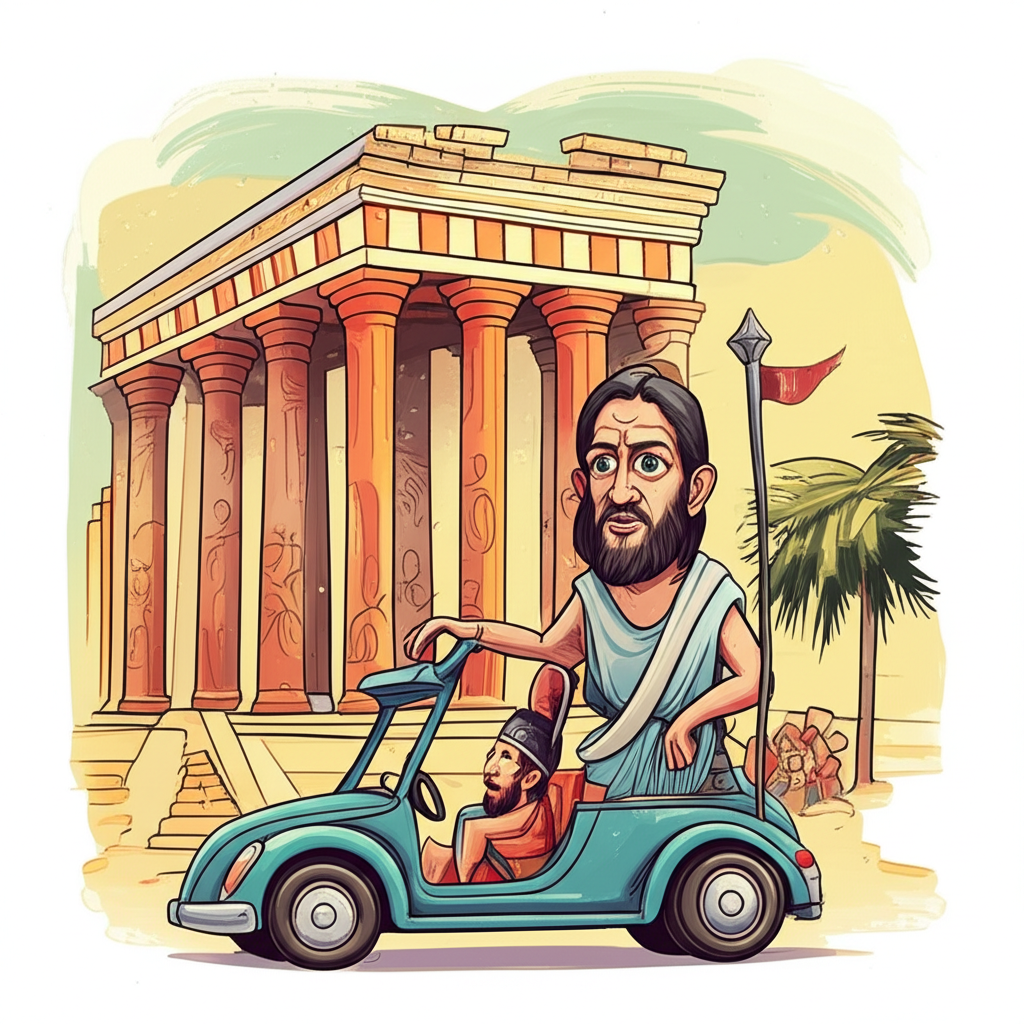
From the sun-drenched shores of the Aegean Sea, where olive trees have stood sentinel for millennia and the whispers of ancient gods still seem to linger on the sea breeze, emerges a tapestry of stories woven by the hands of early Greeks. Among these, the tale of Aphrodite and the Eleusinian Mysteries offers a glimpse into a world deeply intertwined with nature, the cycles of life and death, and the profound, often enigmatic, spiritual quests of its people. It is crucial to understand that these are not historical accounts of events, but rather traditional narratives, imaginative creations passed down through generations, reflecting the worldview and cultural sensibilities of ancient societies.
The era in which these stories took root was one of profound connection to the earth and its rhythms. Ancient Greece, particularly in the fertile plains surrounding Athens and the sacred site of Eleusis, was a society where agriculture was paramount. Life was dictated by the turning of the seasons, the bounty of the harvest, and the ever-present fear of famine. The world was perceived as a dynamic realm, teeming with unseen forces, personified in deities who governed everything from the thunder in the sky to the fertility of the soil. It was a time when the divine was not a distant abstraction, but an immanent presence, influencing daily life and offering explanations for the mysteries of existence. The Eleusinian Mysteries, in particular, were a deeply guarded secret, a series of initiatory rites performed at Eleusis, a small town near Athens, dedicated to the goddesses Demeter and Persephone. These rituals, shrouded in secrecy for centuries, were believed to offer profound insights into life, death, and the possibility of a better afterlife.
Within this rich mythological landscape, Aphrodite emerges not merely as a goddess of love and beauty, but as a complex figure whose essence is inextricably linked to the very forces that drive creation and renewal. She is often depicted as a radiant being, born from the sea foam, her arrival on land marked by a blossoming of flowers and a stirring of desire in all living things. Her symbolic attributes are vast: the dove, representing peace and gentleness; the myrtle, a fragrant evergreen signifying love and immortality; and the rose, a bloom of unparalleled beauty and fleeting perfection. These symbols speak not of divine power in a literal sense, but of the potent forces of attraction, fertility, and the irresistible pull of life that she embodies. She is the spark that ignites passion, the force that ensures the continuation of species, and the embodiment of the beauty that makes existence worthwhile.
While Aphrodite is not a central figure in the core narrative of the Eleusinian Mysteries, her presence can be felt in the underlying themes of renewal and the profound connection between the earthly and the divine. Imagine a story, told in hushed tones under the Attic moon, about the journey of life and its ultimate return. The core of the Eleusinian legend revolves around the abduction of Persephone, daughter of Demeter, the goddess of agriculture and harvest, by Hades, the king of the underworld. Demeter, consumed by grief, withdraws her blessings from the earth, plunging the world into a barren winter. This primal sorrow, this disruption of the natural order, is a powerful metaphor for loss and despair.
It is in this desolation that Aphrodite’s influence, though subtle, can be perceived. For it is the promise of life, the inherent drive for continuation that she represents, that ultimately spurs the gods to action. The narrative would unfold with the pleas of mortals and the concerns of other deities reaching Zeus, king of the gods. He intervenes, brokering a deal: Persephone will spend part of the year with Hades in the underworld and part with her mother on Earth. This pact, a delicate balance between death and rebirth, mirrors the agricultural cycle. When Persephone resides in the underworld, Demeter mourns, and the world experiences winter. But when she returns to her mother, the earth blossoms anew, echoing the vibrant life force that Aphrodite personifies.
The journey of the initiates into the Eleusinian Mysteries mirrored this cyclical pattern. They would undertake a symbolic journey, a pilgrimage to the sacred site, facing trials and undergoing purification rites. While the precise details remain lost to time, it is believed that the initiates experienced dramatic reenactments of the myth, confronting their own fears of death and experiencing a profound sense of rebirth and connection to the divine feminine, represented by Demeter and Persephone. Aphrodite, as the embodiment of love and life’s irresistible urge, would have served as a constant, albeit often unspoken, reminder of what awaited them beyond the darkness – the joy of spring, the warmth of the sun, and the promise of continued existence. Her presence would have been in the very air, in the blooming flowers that signaled the return of Persephone, in the burgeoning life that defied the stillness of winter.
The symbolism inherent in the Eleusinian Mysteries, and by extension, in the broader mythological context involving Aphrodite, is multifaceted. For the ancient Greeks, the myth of Persephone’s descent and return was a powerful explanation for the changing seasons, a fundamental aspect of their agrarian existence. It offered a framework for understanding death not as an absolute end, but as a transition, a necessary part of a larger, cyclical process of renewal. This provided a sense of hope and comfort in the face of mortality. Aphrodite’s role, in this context, is that of the enduring force of life, the primal energy that ensures that even after winter’s bleakness, spring will inevitably return, bringing with it the vibrancy and beauty that makes life worth living. She represents the deep-seated desire for connection, for procreation, and for the continuation of existence, a fundamental impulse that underlies all natural phenomena.
In the modern world, these ancient stories continue to resonate, albeit through different lenses. Aphrodite, as a goddess of love and beauty, remains a ubiquitous figure in literature, art, film, and popular culture, often reimagined and reinterpreted to suit contemporary sensibilities. The Eleusinian Mysteries, while their exact rituals are lost, continue to be a subject of fascination for scholars of religion, mythology, and ancient history. They represent a powerful exploration of human spirituality, the fear of death, and the quest for meaning. The archetypal journey of descent and return, so central to the Eleusinian narrative, is a theme that echoes in countless modern stories, from epic quests to personal growth narratives.
As Muslims, we recognize that all creation, all stories, and all traditions are ultimately from Allah, the one true Creator and Sustainer of the universe. These ancient myths are valuable not for their claims of divinity, but for the insights they offer into the human imagination, the cultural heritage of past civilizations, and the enduring human desire to understand our place in the cosmos. The tales of Aphrodite and the Eleusinian Mysteries are not doctrines to be believed, but rather rich tapestries woven from the threads of human experience, cultural anxieties, and the profound beauty of storytelling. They remind us of the vastness of human creativity and the enduring power of narrative to explore the deepest questions of life, death, and the cyclical nature of existence, all while acknowledging the singular power and majesty of Allah.





